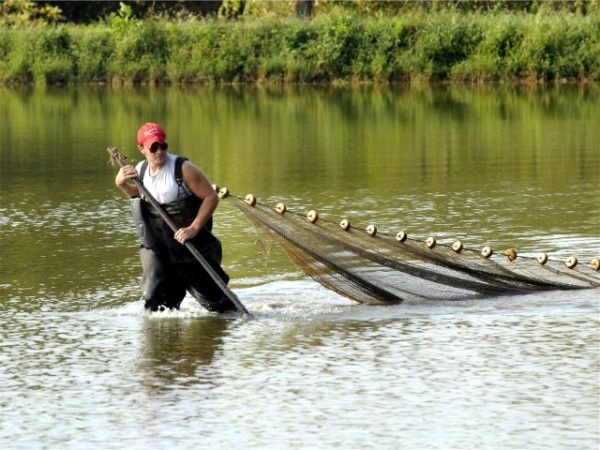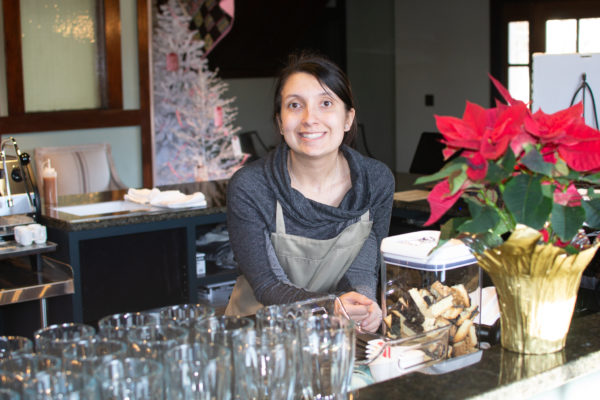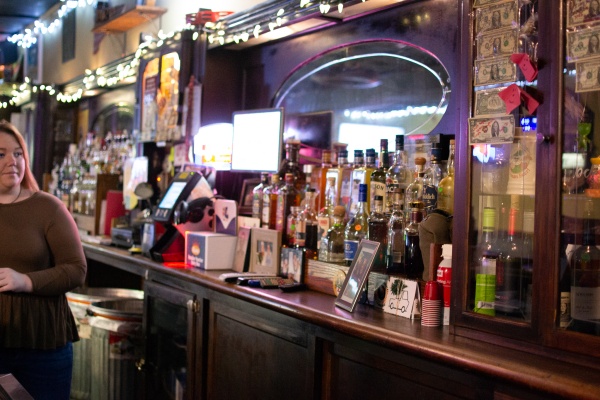Ozark Fisheries is a 4th generation family owned and operated ornamental goldfish and koi farm including butterfly koi. Successful in a global market today, this Richland-based company has a wonderful history that began in the 1920s. For a more information and a complete history, visit the website.
Ozark Fisheries began as a trout hatchery in April 1926 by two men, F. Lawrence Bailliere and Dr. Charles A. Furrow. These two men started with 97 acres at what is known today as the No. 1 Spring. This spring is one of three large springs known as the “Camp Ground Springs”. The second oldest Methodist Church west of the Mississippi River and Camden County’s first Post Office were both established at this location. Ozark Fisheries’ office is located in the old Post Office building.
While on a lecture tour in the East in early 1927, Dr. Furrow became interested in displays of imported fancy goldfish from Japan that were shown in several department stores. He learned that demand exceeded supply, and that producing quality goldfish offered a greater profit potential than rainbow trout. At the same time, Mr. Bailliere, who had a friend in charge of buying livestock for the Woolworth chain stores, heard from his friend, who said his firm would sell all the goldfish Ozark Fisheries could raise. So it was decided that Ozark Fisheries would begin production and marketing of goldfish with an emphasis on the fancy goldfish varieties.
On January 1, 1928, Roy Nakashima, a graduate from the Imperial School of Fisheries, Tokyo, Japan, with over 10 years of field experience, was employed to build and operate the new enterprise. The trout raceways were converted to goldfish ponds, and fancy goldfish brood stock was imported from Japan; the common goldfish brood stock were obtained from Grassyfork Fisheries in Indiana. Less than two acres of water were stocked the first year. The first shipments of goldfish were made on December 11, 1928 – three shipments totaling 1,035 goldfish for total sales of $55.50, this represented the total goldfish sales for 1928.
Construction of ponds was performed with horse teams and slip scoops, along with wheelbarrows and shovels. From the early days on, Ozark’s goldfish production included feeder commons, pond comets, calico fantails, black moors, red fantails and shubunkins. By 1936, all the land suitable for pond construction included in the original land purchase had been fully utilized. Adjacent properties were purchased, not only for expansion, but also for the protection of the watershed supplying water to the springs.
Goldfish were shipped by railway express until the 1950s. Shipping fancy and feeder goldfish to Ozark’s customers has evolved considerably over time. In the early days most shipments were made in large heavy metal cans and were delivered by Railway Express.
Golfipak packaging now allows goldfish and koi to be shipped at affordable prices. Ozark Fisheries developed and patented the Golfipak, which is now in general use in both the goldfish and tropical fish industry. The Golfipak mixes goldfish and water in an oxygen-inflated plastic bag that is sealed and shipped inside a corrugated cardboard box. More than five years was required to develop and test before starting full-time use of the new Golfipak in 1955. This opened up both domestic and overseas markets.
With more land, cattle and pond acquisitions, Ozark Fisheries has become a multi-million dollar company, raising feeder goldfish, fancy goldfish and koi for the pet industry. Beginning in the early 1970’s, with the increasing demand for goldfish feeders, much of the water acreage originally used in production of bait has been converted to goldfish.
Today Ozark Fisheries owns and operates in addition to its Missouri facility, a production and shipping facility in Martinsville, Indiana, formerly known as Grassyfork Fisheries. Both locations produce goldfish and koi which are shipped to customers throughout North America and Western Europe. All marketing is handled out of the Richland, Missouri headquarters.
Following the death of Mr. Bailliere in 1973, and Mrs. Bailliere in 1975, ownership passed to their daughter, Anne Bailliere Cleveland and her four children. After 90 years of continuous operation the business it is now being managed by the third and fourth generation.



